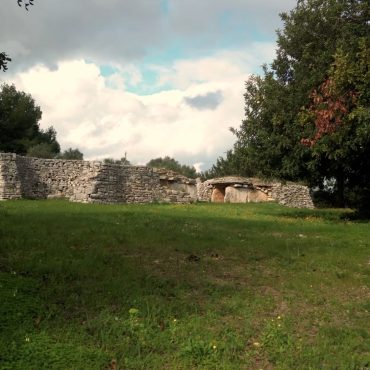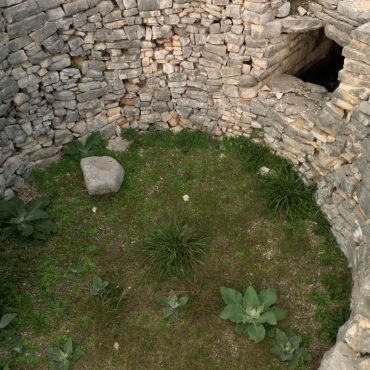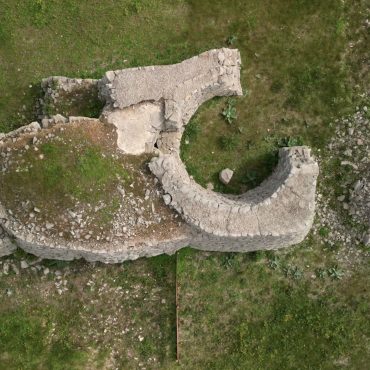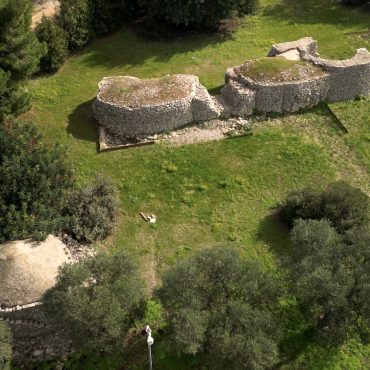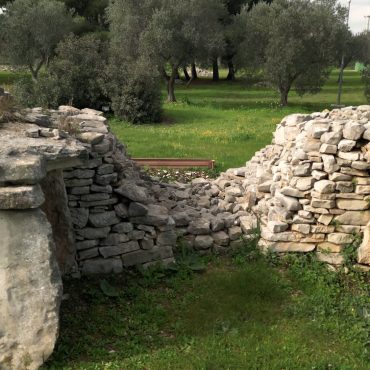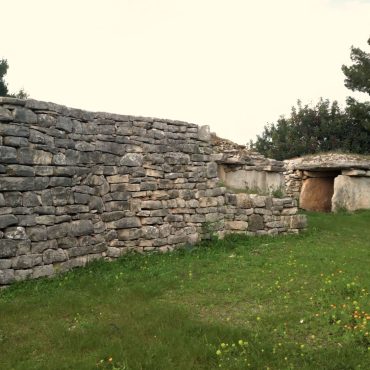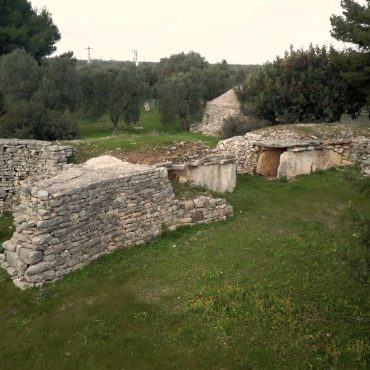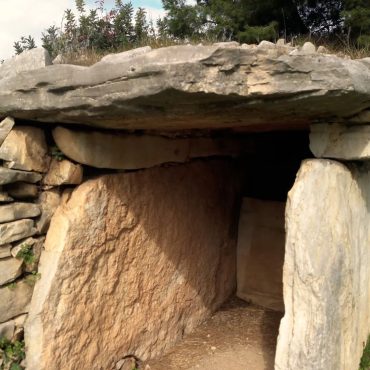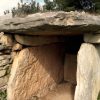
Dolmen San Silvestro
(1800-1700 B.C.)
In the 1950s, Italy was in the grip of an ambitious project: the construction of a network of motorways which would link the North and South, improving the quality of life and the circulation of goods. “The motorway is the future” was the mantra at the time. At dawn on 15th April 1961, a group of workmen from the Fratelli De Venuto construction company, covered in sweat and dust, were about to demolish a pile of stone for the new motorway. The noisy and unstoppable excavators continued to pound the rocks until they hit something extremely hard. The workmen approached, incredulous.
What gradually emerged from that pile of stones was not any old rock but a megalithic monument, thousands of years old, identified as the Dolmen San Silvestro, dating back to the Bronze Age. The archaeologists who were called immediately to the site began their meticulous work. Inside the dolmen a “dromos” was discovered, a seventeen-metre long corridor going from north to south and built according to the trilithic system with large slabs of stone laid vertically and more large slabs laid horizontally.
At the end of the “dromos” the archaeologists discovered the “tholos”, an open circular chamber with the form of an inverted cone. This was probably where sacred rites were performed, a space which evoked the passage between life and death. The most exciting part of the discovery however was in the north section of the corridor. Here, two vertical slabs divided the space and between the slabs and the ground the remains of thirteen bodies were found. These human remains, fragments of funeral items and animal bones all tell of collective burials, a place chosen by the community in which to lay their members to rest. Further excavations revealed that the site had been used for millennia, layering stories and lives one on top of the other until the Middle Ages when grave robbers destroyed the central structure in search of hidden treasures.
The construction of the Dolmen San Silvestro was probably influenced by the funerary architecture of the Aegean area. At that time, the coasts of Puglia were frequently visited by people from different areas of the Aegean sea, including the Myceneans who brought with them building techniques and funeral rites. The dolmen thus became a tangible witness of an era of intense cultural exchanges, of journeys and meetings between distant populations, leaving an indelible mark on the history of the region. Having been restored from the dark, the Dolmen San Silvestro reminds us all that even in the heart of the modern age the past is never far away
